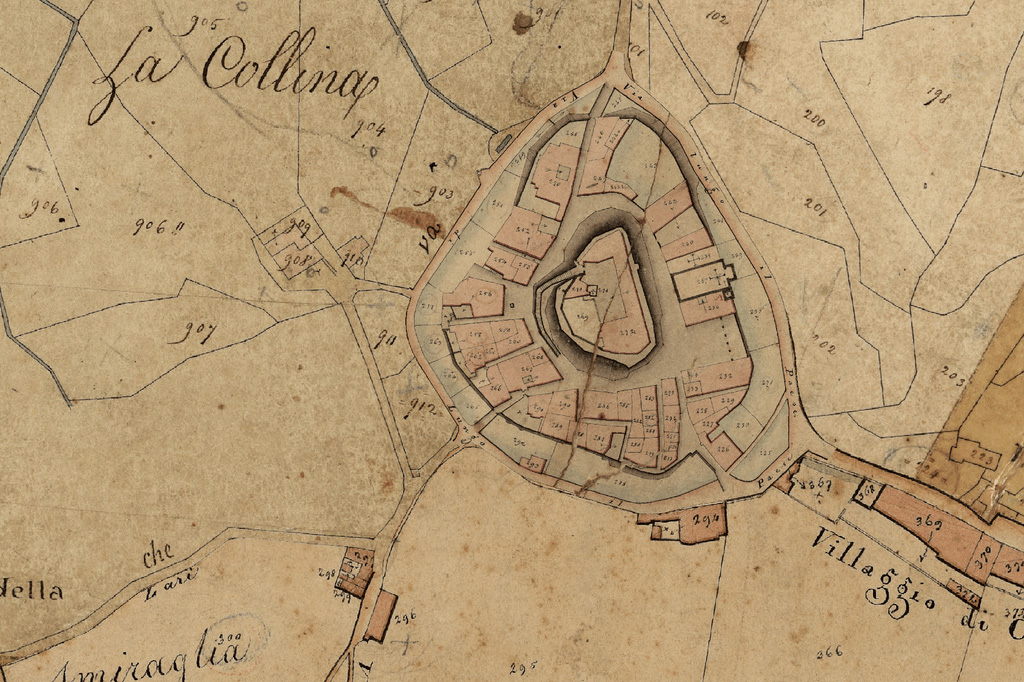Nestling amongst the Pisan hills, the little town of Lari can safely lay claim to having Etruscan origins. It was also inhabited during Roman times and during the early Middle Ages, and by the beginning of the second millennium the town had become very influential. Recorded in the 11th century, the Castle as it is today controlled a vast area of land and this soon became the subject of battles between Pisa and Lucca. From the 12th century the Castle was the property of the Archbishops of Pisa and in 1230 it became the home of the powerful Upezzinghi family of Pisa. From 1289 it became an important fortress of the border of the Republic of Pisa and was besieged many times by the troops of the Republic of Florence. In 1406 Florence conquered Pisa together with Lari that became the most important town in the Pisan hills. The Castle thus became the home of the "Vicari", Florentine governors and members of the aristocratic families of Florence (Medici, Pitti, Peruzzi, Strozzi, Degl'Albizzi,...), that over the centuries transformed it into a luxury residence, suitable for entertaining the rulers of Tuscany (from Cosimo I of the Medici to Leopold II of the Hapsburgs).
The power of the "Vicario" of Lari extended over a vast area that went from the Tyrrhenian coast (from Vada, in the south, nearly to Leghorn in the north), to the tenures of the podestas of Palaia and Peccioli in the east, while towards the south it reached Riparbella and Pontedera in the north. For the entire 15th century, every time Pisa rebelled against Florence, Lari took an active part in attempts to re-establish autonomy from Florence. This is why it was repeatedly besieged but to no avail: the Castle of Lari retained its fame as being invincible. With the 16th century the town finally passed into the hands of the Florentines, who took steps to fortify the Castle and decorate it. Important work was done between the 15th and 16th centuries and can still be seen today: the fortifications were restored by Francesco da San Gallo in 1530 and David Fortini in 1559; the facades overlooking the inner courtyard were decorated with coats-of-arms by Andrea (1435-1525), Luca il giovane (1475-1548) and Giovanni della Robbia (1469-1529/30), Benedetto (1461-1521) and Santi Buglioni (1494-1576).
Inside the Castle numerous frescos were painted (attributed to Andrea da Pisa, late 15th century and to Frà Bartolomeo della Porta O.P.), the architraves were richly decorated, and a Madonna with Child by Andrea della Robbia after a model by Luca della Robbia was made to decorate the bedroom of the "Vicario", Alessandro Segni. The "Vicari" lived in the spacious rooms in the Castle until 1848, when this post was abolished and replaced by that of the praetor. The Castle was then transformed into the Palazzo Pretorio, and was used for this purpose until 1962.
For further information contact us.

